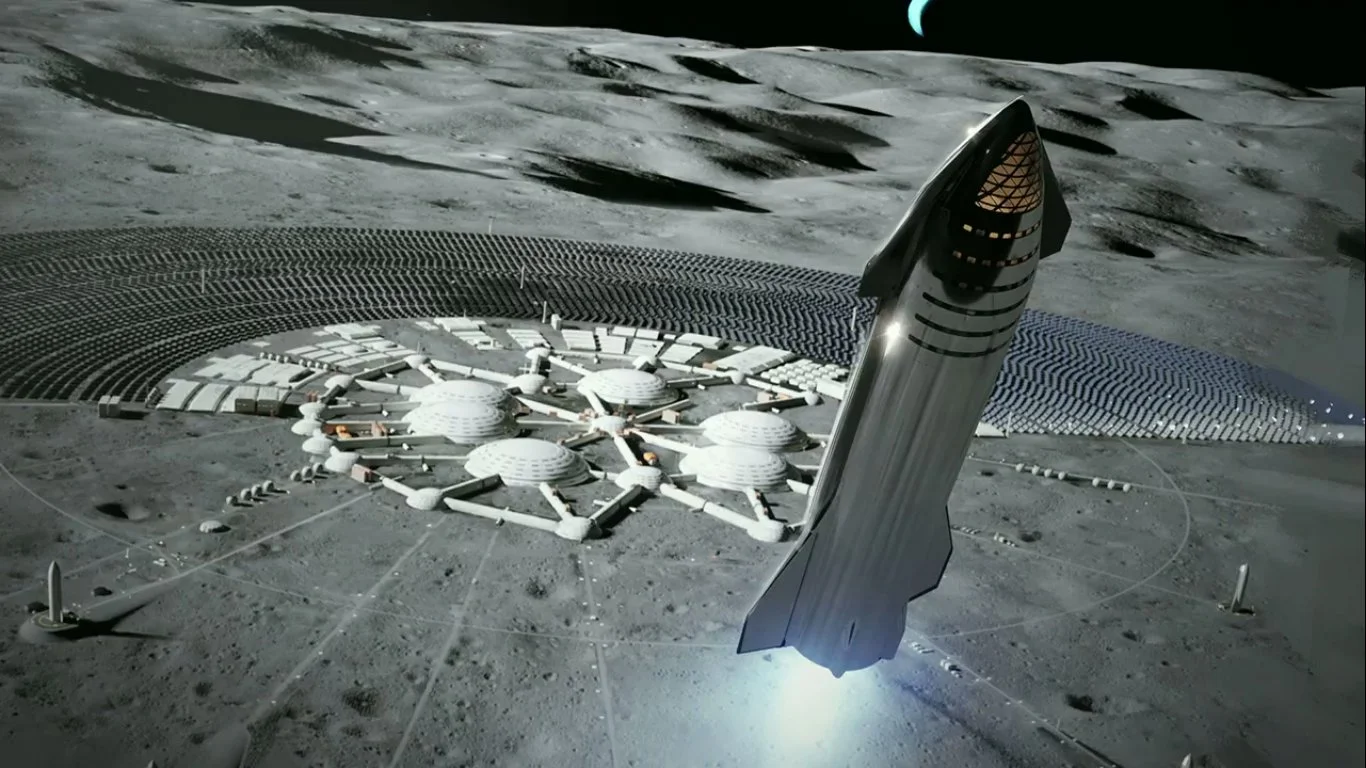Polar Operations: Prospecting, Power, and Staging
SpaceX’s Starship proposes regular flights to the Moon’s poles in the future
Credit: SpaceX
Why the poles are the practical launchpad for industry
The lunar poles promise the best blend of resources and operational stability. Permanently shadowed regions preserve volatiles; nearby high-ground can host power and communications with favourable lighting; accessible terrain supports mobility between the two. That triad—resources, power, staging—lets an industrial base take shape without hauling every input from Earth.
Operations at the poles look like campus management. Survey teams map resources and hazards; power assets grow from demos to microgrids; mobility links ice mining, processing, and depots. The rhythm is iterative and seasonal in spirit, even without seasons: expand, harden, automate, repeat. As capabilities settle, value chains branch out—propellant, construction materials, research, then manufacturing.
The commercial narrative emphasises site rights, access windows and power budgets as the coin of the realm. Providers will pre-sell blocks of access—landing slots, berths, kilowatt allocations—so tenants can plan. Early reference customers will be mining and depot teams whose success validates the location for others. The route to market runs through consortia because no single firm owns every piece; standards for interfaces and safety build confidence. Adoption, predictably, is a choreography of demo sites, rehearsal missions and progressive handovers from crewed to autonomous ops. When the polar base hums like a tough industrial park, the flywheel is turning.
